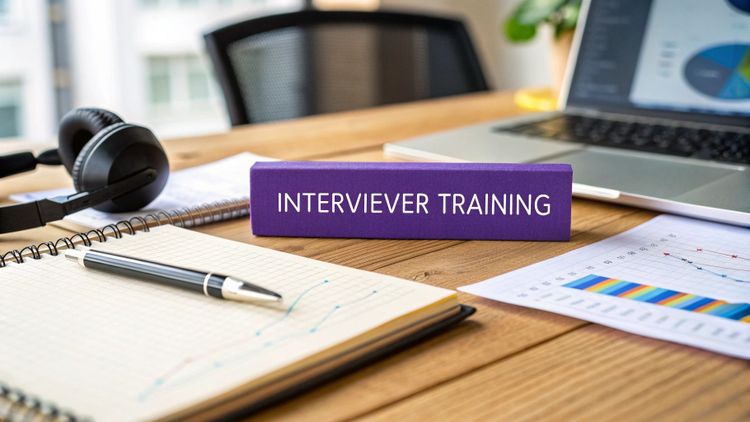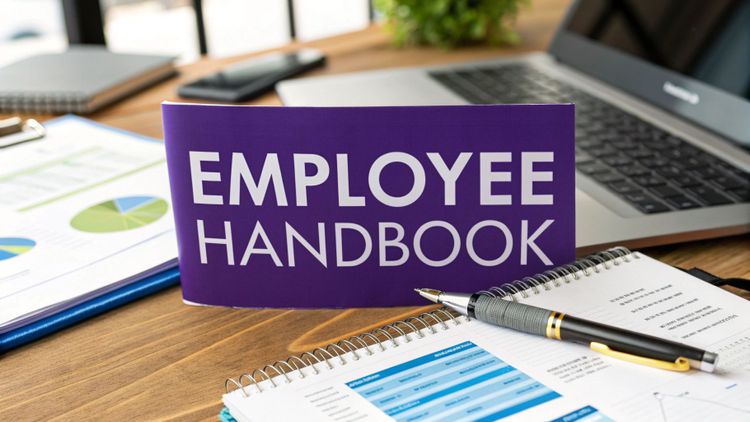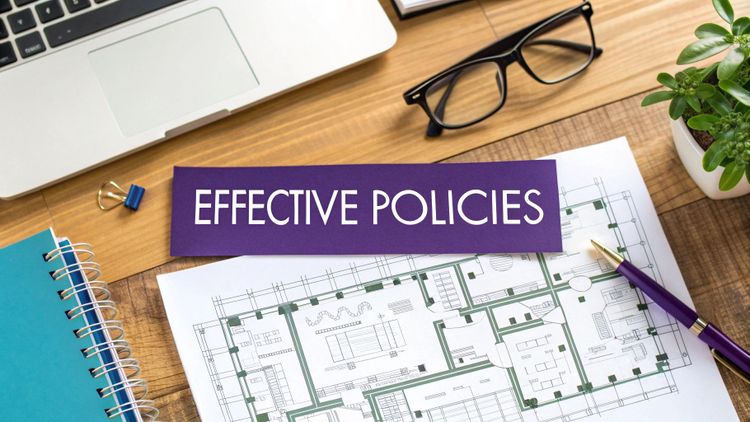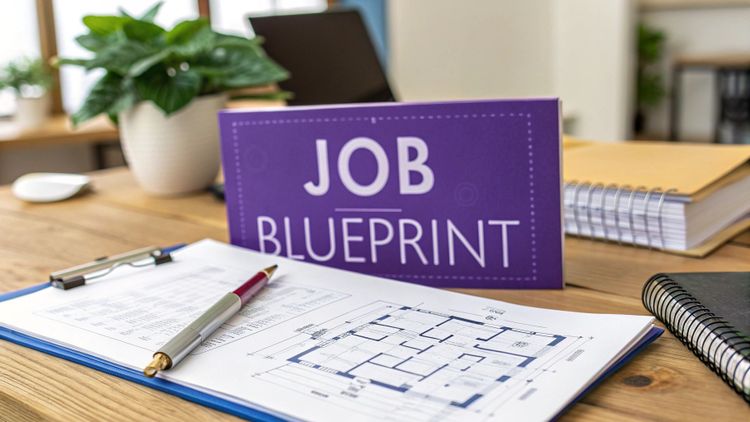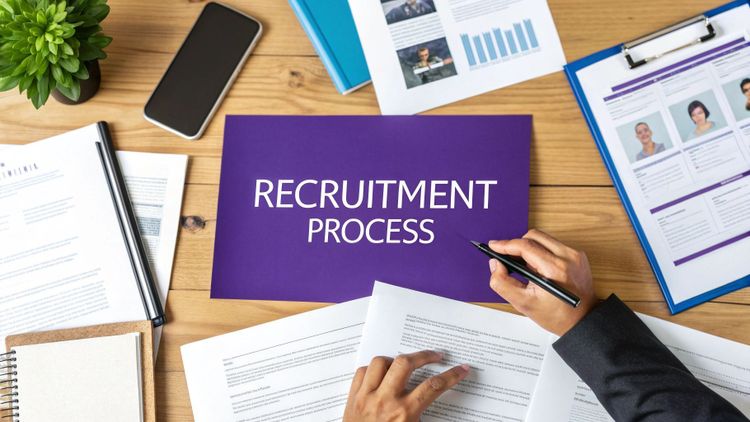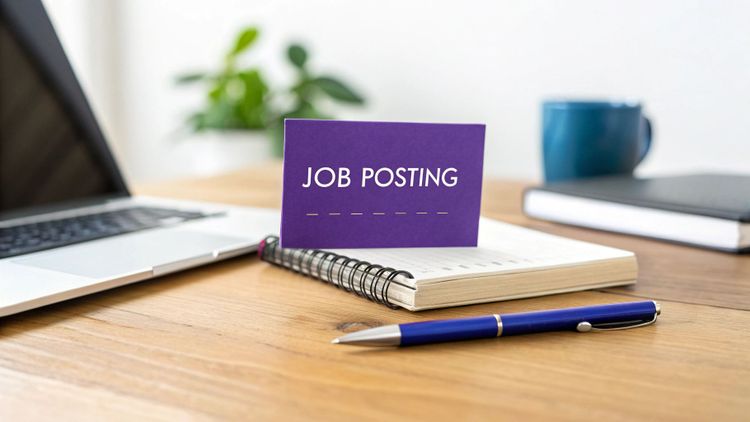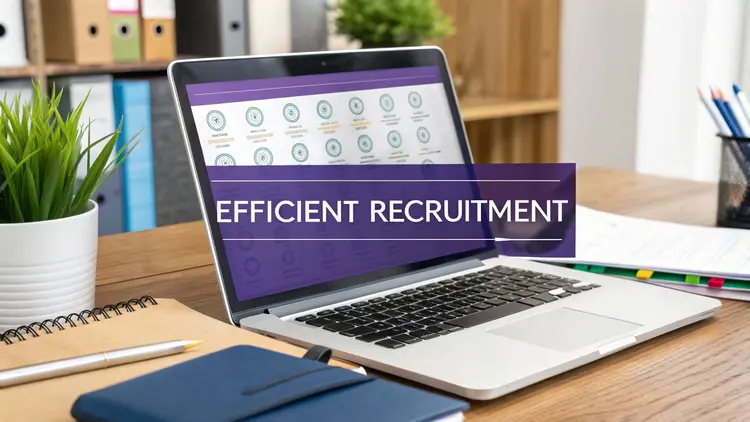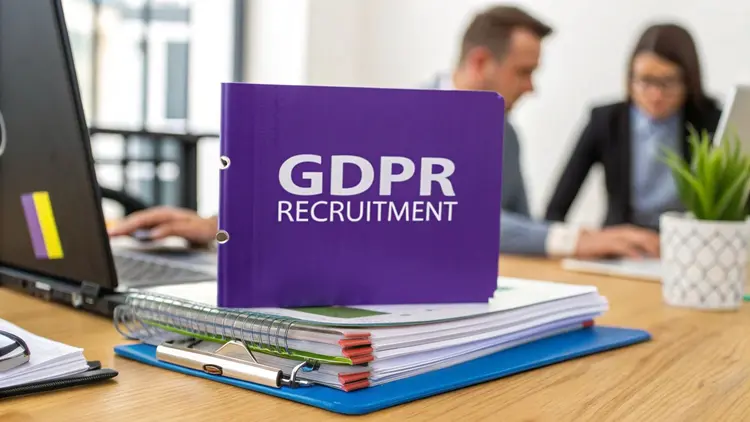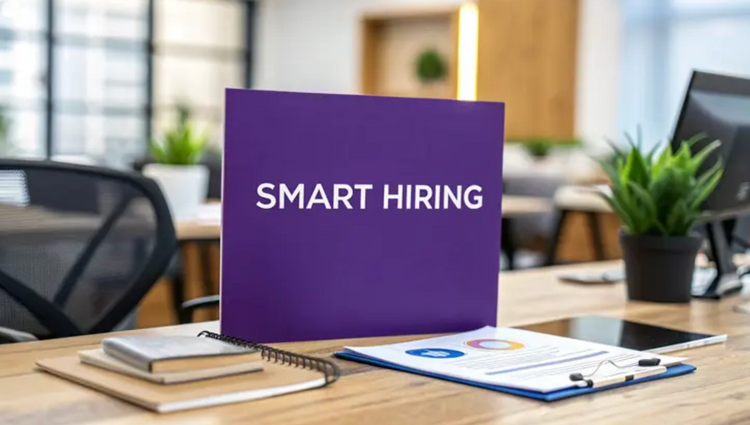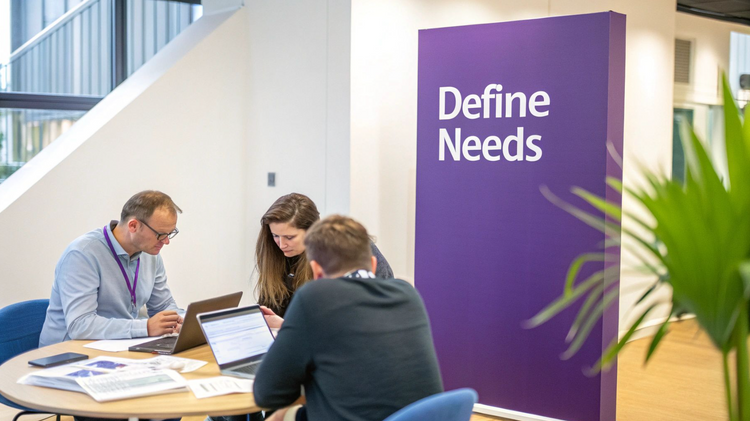HR Processes
7 Actionable Interview Feedback Examples for 2025
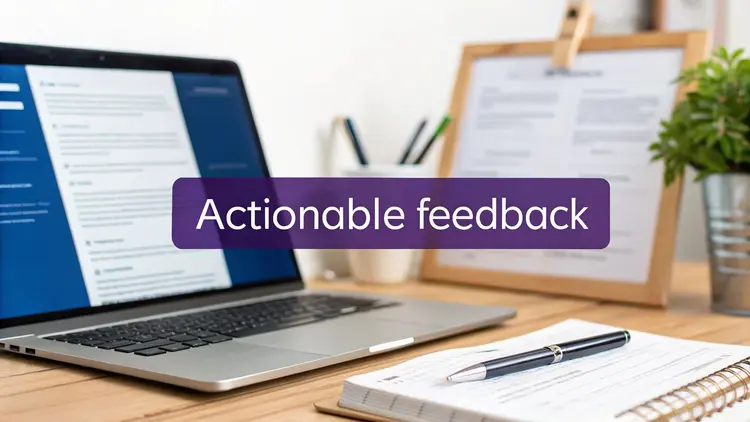
In today’s competitive talent market, providing meaningful interview feedback is not just a courtesy; it's essential. Generic rejections can harm your employer brand and make candidates feel undervalued. On the other hand, specific, constructive feedback can transform a rejected applicant into a future supporter or even a potential hire. This article goes beyond vague niceties to offer actionable templates and strategic analyses for communicating with clarity and professionalism.
Listen to the Podcast Here:
We will explore seven distinct interview feedback examples applicable to various hiring scenarios. You will learn how to:
Deliver impactful positive reinforcement for successful candidates.
Provide constructive feedback for those who aren’t a match.
Assess specific competencies like behavioural skills and cultural alignment.
By mastering these techniques, your organisation can greatly improve its candidate experience, strengthen its talent pipeline, and enhance the overall recruitment process. We'll discuss how to deliver feedback that is not only helpful but also protects and builds your reputation. This guide is aimed at equipping HR managers in hospitality, healthcare, and SMEs with the tools needed to communicate effectively, ensuring every candidate receives timely, consistent, and valuable insights after their interview.
1. Positive Interview Feedback Example
Providing positive interview feedback is vital for building a strong employer brand and maintaining a positive relationship with promising candidates, even if you don’t hire them immediately. This kind of feedback focuses on reinforcing a candidate’s strengths, validating their skills, and providing a memorable, professional experience. It's more than just being polite; it’s a strategic tool for talent acquisition, as demonstrated by forward-thinking organisations like Salesforce and Microsoft for its impact on candidate engagement.

This approach goes beyond saying "you did well" by offering specific, actionable insights that help the candidate recognise their value. By linking their performance directly to your company’s needs or values, you create a powerful, lasting impression. This is one of the most effective interview feedback examples for developing a future talent pipeline.
Strategic Analysis
The core strategy is relationship building. When a candidate leaves the process feeling valued and recognised, they are more likely to reapply, refer others, and speak highly of your company. This is particularly important in competitive sectors like healthcare or tech, where talent is scarce.
Key Insight: Positive feedback isn’t just for rejected candidates you liked. It should be an integral part of the process for every strong contender, including the one you hire. It validates their decision to join and starts the onboarding process positively.
For example, Google is known for providing detailed feedback on technical competencies, even to candidates who don’t receive an offer. They specify which algorithms or problem-solving approaches were commendable, reinforcing the candidate’s expertise while subtly highlighting the high bar for entry. This leaves candidates with a clear understanding of their strengths and a positive perception of Google’s rigorous standards.
Actionable Takeaways
To implement positive feedback effectively, follow these practical steps:
Be Hyper-Specific: Instead of saying, "You had great communication skills," try, "We were very impressed with how you clearly articulated the project lifecycle for the X campaign, making a complex process easy for non-technical stakeholders to understand."
Connect Strengths to Role Requirements: Explicitly link what impressed you to the job description. For example, "Your experience managing cross-functional teams directly aligns with the core leadership responsibilities of this role."
Outline Future Possibilities: If you can’t hire them now, provide a clear timeline. "While we moved forward with another candidate for this specific role, we will be hiring for a Senior Project Manager in Q4 and would be keen to reconnect with you then."
Maintain Professionalism: Ensure the tone is encouraging but not overly familiar. The goal is to build professional respect, not just make a friend.
2. Constructive Rejection Feedback Example
Delivering a rejection is a delicate task, but providing constructive feedback can turn a negative outcome into a positive brand touchpoint. This balanced approach focuses on specific areas for improvement while preserving the candidate's dignity and offering actionable advice. It’s about moving past a generic "we’ve chosen a candidate whose skills better match our needs" to offer real value, a practice supported by thought leaders like the Harvard Business Review.

This method helps candidates understand the exact gaps between their skills and the role’s requirements. By providing clear, objective guidance for professional development, you empower them to grow. It is one of the most respectful and strategic interview feedback examples for maintaining a strong talent pool, even when turning someone down.
Strategic Analysis
The core strategy is empowerment through honesty. Instead of leaving rejected candidates guessing, you provide them with a clear roadmap for improvement. This builds immense goodwill and positions your company as a genuine and transparent organisation that invests in people, even those it doesn’t hire.
Key Insight: Constructive feedback should always be anchored to the specific, non-negotiable requirements of the role. This prevents the feedback from feeling personal or subjective and keeps the conversation focused on professional skills and competencies.
For example, Amazon often frames rejection feedback around its leadership principles. A candidate might be told, "While your technical expertise was strong, we noticed opportunities for you to demonstrate more 'ownership' when discussing past projects, a key leadership principle for this role." Similarly, McKinsey offers detailed breakdowns of case study performance, highlighting where a candidate’s analytical framework could have been stronger.
Actionable Takeaways
To deliver constructive rejection feedback effectively, consider these steps:
Focus on Role-Specific Gaps: Be precise. Instead of saying, "Your experience was a bit junior," try, "For this Senior Manager role, we were specifically looking for someone with direct experience in managing budgets over £500,000, which was a key area we didn’t see in your background."
Provide Concrete Examples: Link your feedback to a moment in the interview. For example, "During the technical assessment, the solution provided was functional but didn’t meet our performance optimisation standards for large-scale data sets."
Offer Resources for Improvement: Suggest tangible next steps. "We recommend exploring advanced certifications in cloud architecture, such as AWS Certified Solutions Architect, to build the skills needed for future roles like this." Learn more about the 8 best practices for providing candidate feedback on seemehired.com.
End with Encouragement: Conclude on a positive and forward-looking note. "We were genuinely impressed by your passion for the industry and encourage you to reapply for future roles that align with your core strengths."
3. Behavioural Interview Feedback Example
Behavioural interview feedback evaluates a candidate based on their past actions as predictors of future performance. This method relies on structured questions designed to uncover specific competencies, often using the STAR method (Situation, Task, Action, Result) as a framework. This type of feedback is supported by assessment firms like DDI and Korn Ferry for its ability to provide objective, evidence-based insights into a candidate’s capabilities.

Unlike general feedback, this approach dissects a candidate’s stories to gauge their problem-solving, collaboration, and leadership skills in real-world scenarios. By focusing on concrete examples, you can deliver feedback that is both defensible and highly developmental, making it one of the most powerful interview feedback examples for assessing core competencies.
Strategic Analysis
The core strategy is competency validation. This method moves beyond what a candidate says they can do and focuses on what they have done. It provides a structured, fair way to compare candidates on the behaviours that matter most for the role, reducing the impact of unconscious bias.
Key Insight: The best behavioural feedback doesn't just judge the outcome; it analyses the process. A candidate might describe a successful project result, but their feedback should focus on how their specific actions (the 'A' in STAR) led to that result. This reveals their thought process and true skill level.
For example, Procter & Gamble (P&G) is renowned for its rigorous behavioural interviews focused on leadership competencies. Feedback to a candidate might pinpoint that while they successfully described a project's positive outcome (Result), their personal contribution (Action) was unclear. This specific feedback is far more useful than a vague statement like "we needed to see more leadership."
Actionable Takeaways
To deliver effective behavioural interview feedback, follow these practical steps:
Reference Specific STAR Components: Pinpoint which part of their story was strong or weak. For instance, "You clearly set the scene by defining the Situation and your Task, but the specific Actions you personally took to resolve the conflict were less clear."
Highlight Strong Behavioural Indicators: Connect their examples to company values or job requirements. "The way you took initiative to reorganise the workflow demonstrates the proactive problem-solving we value in our team leaders." For guidance on framing these questions, you can explore the 10 best interview questions to ask candidates on seemehired.com.
Suggest Alternative Approaches for Weak Responses: If a candidate’s actions were ineffective, offer constructive guidance. "In that situation, a more collaborative approach might have involved getting early buy-in from the marketing team to prevent last-minute changes."
Connect Behaviours to Role Success: Explicitly link their demonstrated behaviours to on-the-job success factors. "Your example of managing competing deadlines directly relates to this role’s need for excellent time management under pressure."
4. Technical Skills Assessment Feedback Example
For technical roles, generic feedback is ineffective. Technical skills assessment feedback drills down into specific competencies, evaluating a candidate’s performance on coding challenges, system design problems, and domain-specific tasks. This highly detailed feedback is crucial for roles in software engineering, data science, and cybersecurity, providing concrete insights into their problem-solving methodology and technical proficiency. Platforms like HackerRank and organisations like Stack Overflow have popularised this rigorous, evidence-based approach.
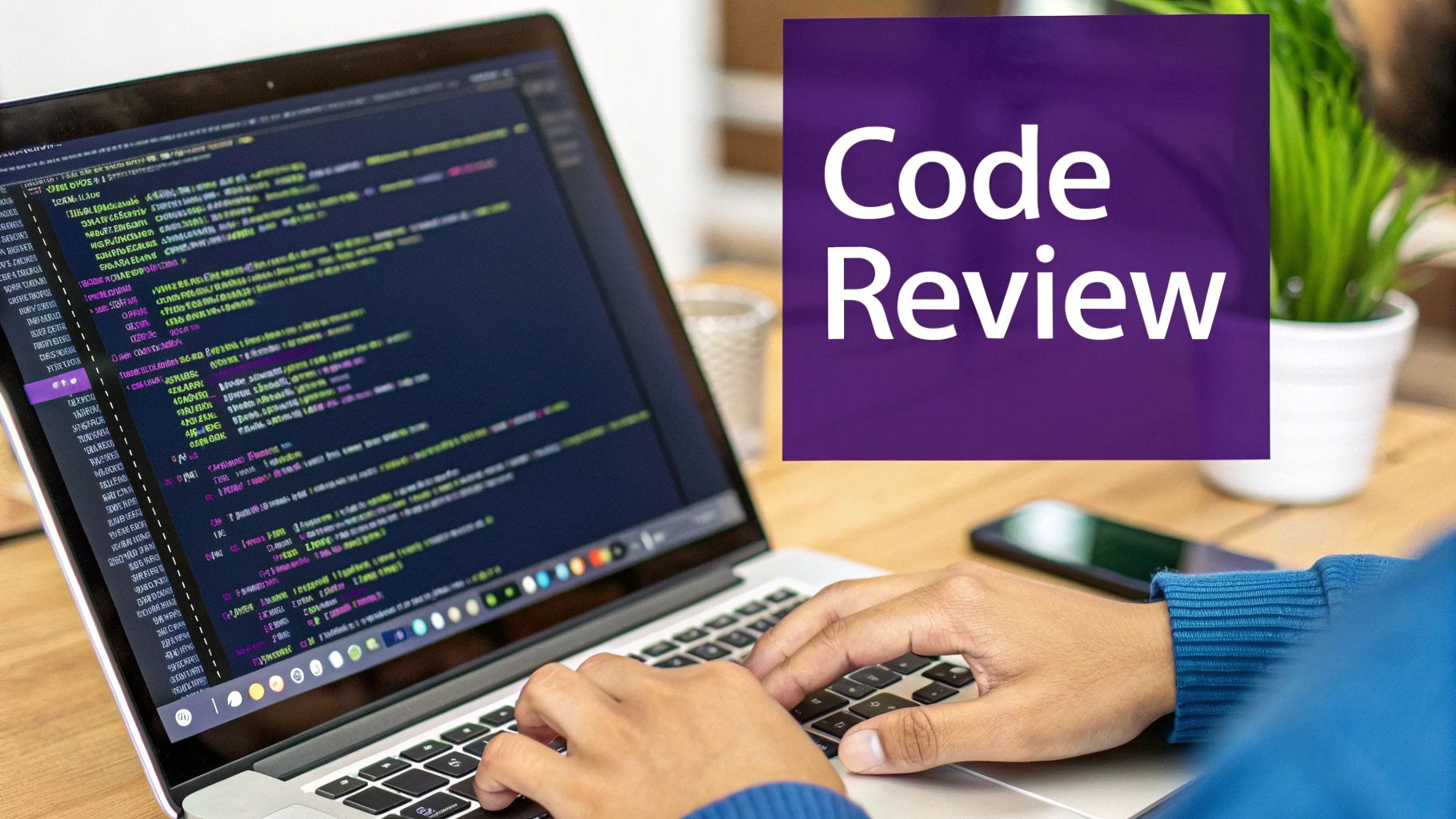
This method goes beyond a simple pass/fail verdict. Instead, it offers a structured breakdown of a candidate’s technical strengths and areas for development. By providing this level of detail, you not only make a fair and defensible hiring decision but also enhance your employer brand within technical communities. These detailed interview feedback examples show that your organisation values deep expertise and is committed to a transparent, skill-focused evaluation process.
Strategic Analysis
The core strategy is credibility and precision. In technical fields, an organisation's credibility is tied to its technical excellence. Providing specific, insightful feedback demonstrates that your interviewers are experts themselves and that your evaluation process is robust. This builds immense respect among candidates, even those who are rejected.
Key Insight: Technical feedback is a powerful tool for talent development, not just assessment. When you suggest specific learning resources or highlight an alternative, more efficient solution, you are investing in the candidate’s growth. This act of goodwill often brings top talent back to you in the future when they have upskilled.
For example, Meta is known for providing candidates with a breakdown of their coding interview performance, covering areas like data structures, algorithms, and code cleanliness. Similarly, Netflix’s feedback on system design interviews often discusses the trade-offs a candidate made, acknowledging their reasoning while exploring alternative architectural choices. This shows respect for the candidate’s thought process while maintaining a high technical bar.
Actionable Takeaways
To deliver impactful technical feedback, adopt a systematic approach:
Break Down the Assessment: Structure feedback around key technical pillars, such as "Problem Decomposition," "Algorithm Efficiency," or "API Design." This organises your thoughts and makes the feedback easier for the candidate to digest.
Use Specific Code or Design Examples: Refer directly to the candidate’s solution. Say, "Your use of a recursive function to traverse the tree was creative, but an iterative approach using a stack would have avoided potential stack overflow issues with large datasets."
Recommend Learning Resources: Point candidates toward specific areas for improvement. For instance, "To strengthen your understanding of system scalability, we recommend reviewing resources on database sharding and caching strategies, like those found on Martin Fowler's blog."
Acknowledge Problem-Solving Style: Recognise their approach, even if it wasn’t optimal. "We appreciated your methodical, step-by-step approach to debugging the issue, which reflects a strong, practical mindset."
5. Cultural Fit Assessment Feedback Example
Cultural fit assessment feedback evaluates how a candidate’s values, work style, and behaviours align with your organisation's culture. This type of feedback goes beyond technical skills to address workplace compatibility, helping candidates understand your company’s unique environment. It is crucial for businesses like Zappos and Patagonia, where a strong, unified culture is a core business strategy.
This feedback is essential for maintaining cultural integrity and ensuring new hires will thrive within existing team dynamics. It’s not about hiring people who are all the same; it's about hiring individuals who share core values, regardless of their background. Providing clear feedback on cultural alignment is one of the most insightful interview feedback examples you can use to explain a hiring decision.
Strategic Analysis
The strategy here is long-term retention and team cohesion. Hiring for cultural fit reduces the risk of early turnover, which is often caused by a misalignment between an employee's expectations and the workplace reality. It ensures that new team members will integrate smoothly, contribute positively to the work environment, and feel a sense of belonging.
Key Insight: Cultural fit feedback must be grounded in objective, defined company values, not subjective feelings or "gut instincts." Without this, it risks becoming a vehicle for unconscious bias. The feedback should reference specific, observable behaviours discussed during the interview.
For instance, HubSpot assesses candidates against its famous Culture Code. Feedback isn't a vague "you're not a good fit," but rather a specific observation like, "During the team exercise, we noticed you preferred to work independently, whereas our 'Solve for the Customer' value often requires highly collaborative, cross-departmental brainstorming sessions to find the best solution." This provides concrete, actionable information.
Actionable Takeaways
To deliver effective cultural fit feedback, consider these steps:
Reference Specific Company Values: Anchor your feedback in your organisation's publicised values. For example, "One of our core values is 'Ownership.' We were looking for examples where you took the lead on a project from start to finish without close supervision."
Provide Behavioural Examples: Explain how their interview answers or behaviours did or did not align with the culture. "You mentioned you thrive in a highly structured, top-down environment. Our teams operate with a great deal of autonomy, which seems to differ from your preferred work style."
Explain the ‘Why’: Connect cultural traits to daily work life. "Our fast-paced, agile workflow requires team members who are comfortable with shifting priorities, which we felt might be a challenge based on your desire for long-term, stable project roadmaps."
Focus on Alignment, Not Judgment: Frame the feedback as a matter of matching, not a critique of the candidate’s character. Phrases like "We've found that people who succeed here share [X trait]" are more constructive than "You lack [X trait]." Learn more about how to refine your approach with these top cultural fit interview questions on seemehired.com.
6. Panel Interview Feedback Example
Panel interview feedback synthesises insights from multiple interviewers to provide a comprehensive, 360-degree view of a candidate’s performance. This method goes beyond a single perspective, combining diverse viewpoints from different functional areas or seniority levels to create a clear and less biased assessment. It is essential for the rigorous hiring processes at top-tier consulting firms like McKinsey & Company and Bain & Company, where collaborative decision-making is critical.
This approach ensures that feedback is not skewed by one individual’s impression. Instead, it offers a balanced evaluation by weighing technical skills, cultural fit, problem-solving abilities, and communication styles as observed by different stakeholders. These consolidated interview feedback examples are invaluable for making high-stakes hiring decisions with greater confidence.
Strategic Analysis
The core strategy is risk mitigation through triangulation. By gathering data points from several interviewers, you can validate strengths, uncover potential red flags, and get a clearer picture of how a candidate might interact with various teams. This is especially critical for leadership roles or positions that require extensive cross-functional collaboration.
Key Insight: The power of panel feedback lies in identifying patterns. When multiple interviewers independently highlight the same strength (e.g., exceptional strategic thinking) or weakness (e.g., a lack of detail in their project plans), the feedback gains significant weight and credibility.
For instance, Apple often uses cross-functional panels to assess candidates for product roles. An engineer on the panel might validate technical depth, a designer evaluates user empathy, and a marketing specialist assesses commercial awareness. The consolidated feedback provides a multidimensional profile that a single hiring manager could never achieve alone. This structured approach is a key part of how you can improve your interview process with a few easy tweaks.
Actionable Takeaways
To deliver effective panel interview feedback, follow these steps:
Synthesise, Don’t Just List: Instead of sending separate notes, combine the feedback into a single, cohesive narrative. Start with areas of strong consensus. For example, "The entire panel was impressed with your data-driven approach to problem-solving."
Acknowledge Different Perspectives: Where opinions differ, frame it constructively. "While the engineering lead noted your deep technical expertise, the product manager had questions about translating those features into client-facing benefits. This is a key area we would focus on during onboarding."
Structure by Competency: Organise the feedback around core competencies (e.g., Leadership, Technical Skill, Communication) rather than by interviewer. This makes it easier for the candidate to understand their performance against the role’s requirements.
Provide a Clear Final Decision: The feedback must lead to a definitive conclusion. Explain how the combined insights led to the final hiring decision, ensuring the candidate understands the comprehensive nature of the evaluation.
7. Follow-up Interview Feedback Example
Follow-up interview feedback is a specialised communication tool used in multi-stage hiring processes. It builds upon previous conversations, providing a continuous and evolving assessment of a candidate’s suitability. This type of feedback demonstrates a structured evaluation process and gives candidates targeted insights, showing that their performance is being tracked progressively. It's a hallmark of rigorous hiring frameworks, used by top-tier organisations like Goldman Sachs and Accenture, where candidates often go through several intensive rounds.
This approach transforms the interview series from a set of disconnected hurdles into a cohesive journey. By referencing previous discussions and highlighting specific areas for further exploration, you signal to the candidate that their time and effort are valued. This is one of the most sophisticated interview feedback examples for maintaining engagement and making informed decisions in a lengthy hiring cycle.
Strategic Analysis
The core strategy is progressive evaluation and sustained engagement. Instead of resetting the assessment at each stage, this method creates a cumulative picture of the candidate. It allows interviewers in later rounds to probe deeper into specific areas, whether they are strengths to be confirmed or concerns to be addressed. This is particularly effective in high-stakes roles, such as management consulting or investment banking, where each interview stage assesses a different competency.
Key Insight: Follow-up feedback is a powerful tool for testing a candidate’s coachability and adaptability. By providing subtle cues or addressing a minor weakness from a previous round, you can observe how they respond and incorporate that feedback in the next stage.
For instance, in the final "super day" interviews at major investment banks, feedback from earlier rounds is consolidated. A candidate who excelled in technical questions but was less clear on a market trend question in round one might be asked a similar-themed question in the final round. This gives them a chance to demonstrate improvement and shows the firm’s meticulous, multi-faceted approach to talent assessment.
Actionable Takeaways
To effectively deliver follow-up feedback and manage a multi-stage process, use these tactics:
Reference Previous Performance: Start by acknowledging their progress. "In our first conversation, you gave a great overview of your project management skills. Today, we'd like to dive deeper into how you handle budget overruns."
Highlight Areas for Deeper Discussion: Be transparent about what you want to explore next. "We were impressed with your technical demo. In the next stage with our senior leadership, be prepared to discuss the strategic business impact of that technology."
Acknowledge Candidate Effort: Recognise the commitment required. "We appreciate you preparing the case study. Your analysis was thorough, and it gave us the insight we needed to move you to this final stage."
Provide Clear Next Steps: Articulate exactly what the next round entails, who they will meet, and the format, especially if it's an online interview. To ensure a smooth process for virtual stages, review some best practices on how to conduct an effective online interview.
7 Types of Interview Feedback Compared
| Feedback Type | Implementation Complexity 🔄 | Resource Requirements ⚡ | Expected Outcomes 📊 | Ideal Use Cases 💡 | Key Advantages ⭐ |
|---|---|---|---|---|---|
| Positive Interview Feedback | Medium - requires personalised examples and time | Moderate - detailed review needed | Builds candidate confidence, maintains positive relationship | Candidates who performed well; employer branding | Builds trust and professionalism; encourages applications |
| Constructive Rejection Feedback | High - detailed and balanced messaging required | High - time-intensive and skilled delivery | Provides clear improvement areas, maintains dignity | Candidates not selected but worth nurturing | Supports candidate growth; protects employer brand |
| Behavioural Interview Feedback | Medium - structured STAR evaluation needed | Moderate - trained interviewers | Concrete examples of behaviour; reduces bias | Roles assessed via competencies and past behaviour | Objective assessment; clear development areas |
| Technical Skills Assessment Feedback | High - requires technical expertise and detailed analysis | High - technical reviewer time | Specific technical development; clear coding insights | Technical roles needing skill validation | Detailed skill breakdown; improvement pathways |
| Cultural Fit Assessment Feedback | Medium - subjective evaluation, risk of bias | Moderate - contextual knowledge required | Improves long-term fit and retention | Evaluating alignment with company values | Reduces turnover; emphasises soft skills |
| Panel Interview Feedback | High - coordination of multiple interviewers | High - collaboration and facilitation time | Comprehensive candidate view; reduces bias | Roles with diverse skill requirements | Holistic evaluation; diverse perspectives |
| Follow-up Interview Feedback | Medium to High - tracking progression across rounds | Moderate to High - consistent documentation | Tracks candidate growth; targeted improvements | Multi-round or staged interview processes | Demonstrates candidate progression; focused feedback |
Transforming Feedback into a Hiring Superpower
Throughout this guide, we've gone beyond simple templates to dissect the anatomy of impactful communication. The interview feedback examples provided, from delivering positive news to handling a difficult rejection, all share a common DNA: they are specific, evidence-based, and respectful. They transform feedback from a procedural chore into a strategic asset.
Mastering this skill is not just about being polite; it’s a critical component of modern, effective recruitment. A well-crafted feedback message, whether it’s for a successful hire or a rejected applicant, demonstrates your organisation's professionalism and reinforces its values. This practice directly strengthens your employer brand, making you a more attractive destination for top talent in a competitive market.
Key Strategic Takeaways
To elevate your hiring process, focus on these core principles derived from our examples:
Structure is Non-Negotiable: Organise your feedback consistently. Start with a clear decision, provide specific, evidence-based examples (the "what"), and then explain the impact (the "why"). This structure brings clarity and removes ambiguity for the candidate.
Specificity Over Generalities: Replace vague statements like "strong communication skills" with concrete examples, such as "Your ability to clearly articulate the project's lifecycle during the technical assessment was particularly impressive." This turns generic praise into memorable, actionable insight.
Balance and Objectivity are Crucial: When delivering rejection feedback, pair areas for development with genuine strengths. This approach softens the message, shows you evaluated them fairly, and helps the candidate leave the process with a sense of respect, not resentment.
Connect to a Central System: The biggest challenge in providing consistent feedback is logistical chaos. Without a centralised system, notes get lost, communication becomes fragmented, and candidates fall through the cracks. This is where process and technology must intersect.
Adopting these practices does more than just improve your candidate experience. It builds a future-proof talent pipeline. Today’s rejected candidate, if treated with respect and given valuable feedback, could become your perfect hire for a future role, a brand advocate, or even a customer. By investing a few extra minutes in delivering quality interview feedback examples like the ones we’ve explored, you are investing in the long-term health and reputation of your organisation. It’s a small effort that yields a significant, lasting return, turning every candidate interaction into a brand-building opportunity.
Ready to make high-quality, consistent feedback a cornerstone of your recruitment strategy? SeeMeHired is an all-in-one Applicant Tracking System designed to centralise your communication and streamline your entire hiring workflow. Effortlessly manage candidate notes, send structured feedback, and build a stronger employer brand by visiting SeeMeHired to see how you can transform your hiring process today.

